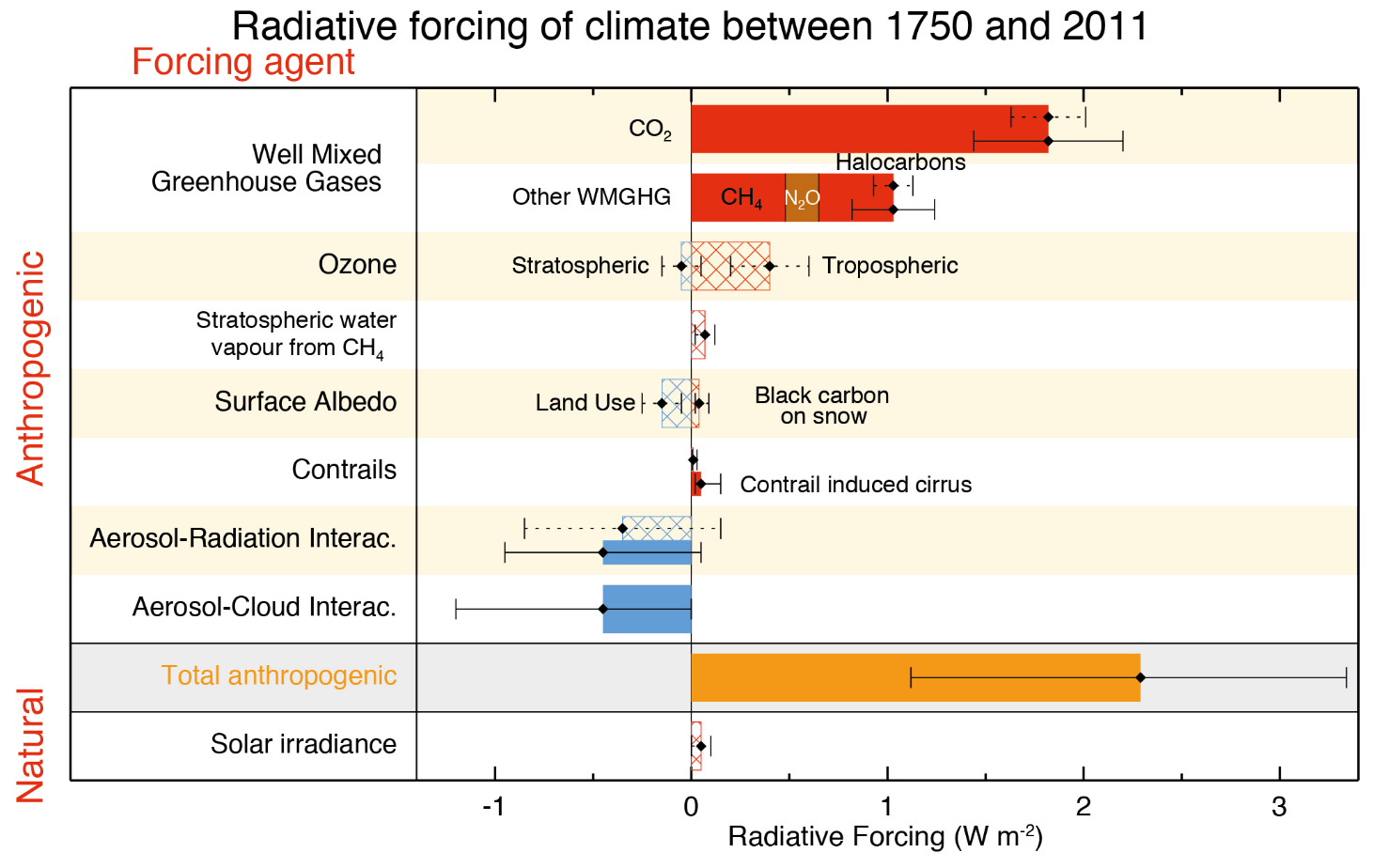The Big Picture
In this lesson, you have taken a closer look at the major greenhouse gases, their natural sources and the ways in which human activity has been affecting their concentrations in the atmosphere. It is important to understand how each of these gases fits into the big picture of our changing climate. Below is an image showing the estimated change in radiative forcing resulting from anthropogenic increases in greenhouse gases and other important contributors from 1750-2011.

Myhre, G., D. Shindell, F.-M. Bréon, W. Collins, J. Fuglestvedt, J. Huang, D. Koch, J.-F. Lamarque, D. Lee, B. Mendoza, T. Nakajima, A. Robock, G. Stephens, T. Takemura and H. Zhang, 2013: Anthropogenic and Natural Radiative Forcing. In: Climate Change 2013: The Physical Science Basis. Contribution of Working Group I to the Fifth Assessment Report of the Intergovernmental Panel on Climate Change [Stocker, T.F., D. Qin, G.-K. Plattner, M. Tignor, S.K. Allen, J. Boschung, A. Nauels, Y. Xia, V. Bex and P.M. Midgley (eds.)]. Cambridge University Press, Cambridge, United Kingdom and New York, NY, USA, pp. 659–740, doi:10.1017/ CBO9781107415324.018.
Think about the following questions:
- Why has the largest change in forcing occurred for carbon dioxide even though it has the smallest global warming potential of the greenhouse gases shown above?
- How do you think these forcings could change in the future?
- In what ways would you expect these changes in radiative forcing to affect earth's climate?
Congratulations! You have now completed Lesson 6. Move on to Lesson 7 to learn more about climate feedbacks.